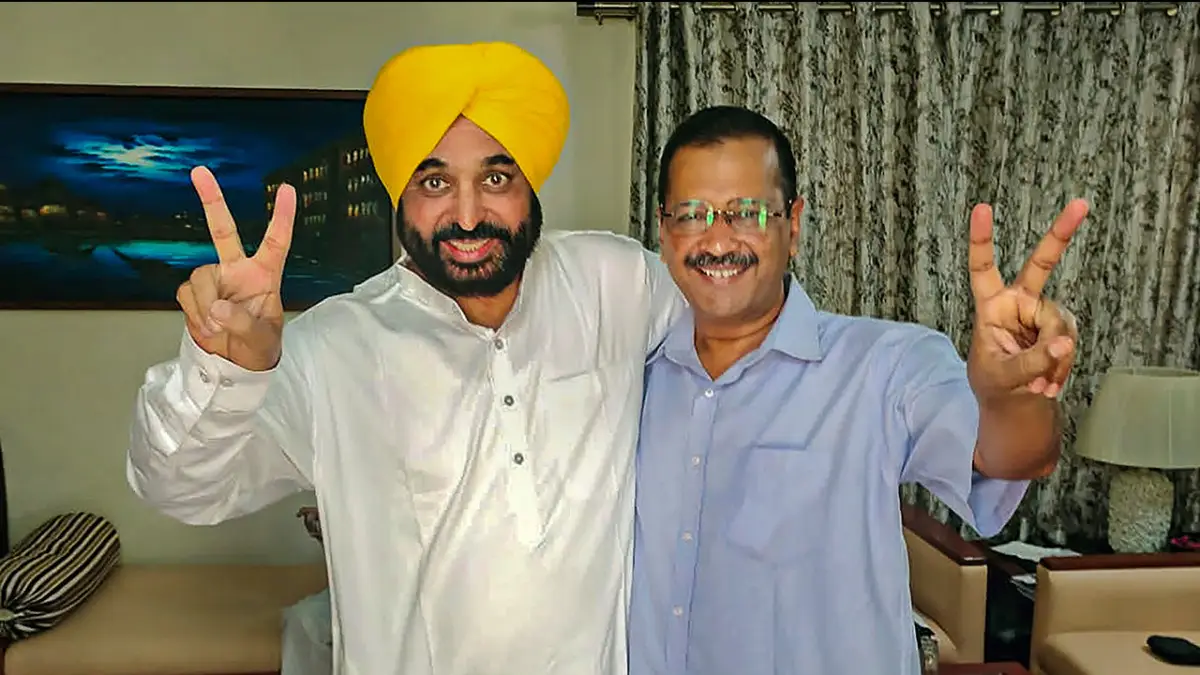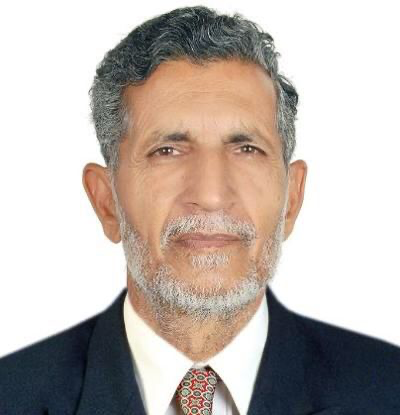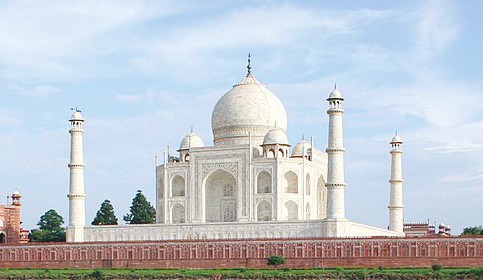
AAP would have to, and must remember the People’s temperament pertaining to ‘Opposition, Agitation, Rebellion and Change’.


There has come about an upheaval in the echelons of power, in the strategically significant border-State of Punjab, which has been relegated to a dilapidated condition. In this context, it is noteworthy that many a stalwart veteran political bigwigs have been reduced to a shambles, having tasted crushing defeat in the recent elections. Amongst those who tasted bitter fruit are Prakash Singh Badal (five-time CM) Sukhbir Singh Badal (Supremo o Akali Dal) ‘Raja’ Amarinder Singh (former CM) Charanjit Singh Channi (CM for a couple of months) Navjot Singh Sidhu (State-Congress Chief) and Jasvir Singh Garhi (BSP State-President) while Ashwani Sharma (BJP State-boss) has emerged victorious. Aam Aadmi Party (AAP) has been given a resounding mandate by the populace. Leaders have lost the contest and Punjab has won the battle. Has Punjab actually won, in reality?
Polling results for 117 seats in Punjab Assembly were declared on March 10. The State has 2.14 crore voters. In 2017, 70% voters had exercised their right to political franchise. This year, 71.95% people voted. Punjab was, apparently, dejected this time, as compared to 2017. A staggering number of 1,10,308 voters opted to accept ‘notes’, in exchange for votes.
AAP won a thumping 92 seats, BSP got 1, BJP 2, 1 Independent candidate won, Congress 18 and SAD was saddened at having bagged just 3 seats. Others including Leftist-parties, Kisaan Morcha and sundry outfits failed miserably while not evening opening their accounts. Could it be presumed that the overwhelming success of one party is a victory for AAP and the demolition of all other parties is a vote of disappointment against Congress and SAD ? There was noticeable widespread public protestation, anger and a rebellious wave to effect massive change, by bringing about the downfall of ‘the establishment’. All of these sentiments assumed the form of a volcanic eruption, which outpoured rivers of lava. Delhi CM Arvind Kejriwal and his Dy. CM Manish Sisodia visit Hanuman Mandir and then tell their party-cadre that “this is the biggest Inquilaab” (revolution). Is it, truly, a “revolution”?
The percentage of votes was as follows : AAP 42, SAD 18.38, BJP 1.77, CPI 0.05, CPM 0.06, CPML 0.03, Congress 22.98, NOTA votes (none of the above) totaled 0.71, RSP 0.01. The maximum % of 42.01 was claimed by AAP which had received only 23.7% in 2017. Congress got 22.98 as against 38.5 in 2017. SAD recorded a fall from 25.2 to 18.38. BJP registered 1.77 compared to 1.5 last time. Out of 69 seats in Malwa-belt, AAP captured 66. In this region, there was a strong presence of Kisaan protestors and a huge dejection against the previous governance by various parties or alliances. The farming community became a catalyst for Punjab’s empowerment and for giving power to AAP. Whether ‘Dera-following’ or caste-politicking or religious machinations, nothing at all could succeed obstruct the wave of massive awareness amongst the people. AAP reaped a rich harvest, on account of strong public resentment against the traditional parties, everywhere including the latter’s bastions. AAP’s slogan of “One Chance” resonated extremely well with the masses and their hearts were touched. Then, there were additional enticements like the National Coordinator’s poll-promises, which included Rupees 1000/-, 300 free units and 24-hour uninterrupted supply of electricity. It was an emotionally charged election.
After the victory-laps are over, AAP shall have no ordinary, common promises to keep but would have a very special agenda to adhere to, in order to retain the faith and trust of voters who installed AAP at the pinnacle of power. AAP would not benefit from breaching this faith and betraying such trust especially when the Party has promised revolutionary measures for the good of Punjab. Special emphasis would have to be given to the extinction of the era of traditional fashion or trend of lineage-nepotism, as promised by AAP. The general message is that the public wants change in various spheres and desire public-welfare schemes to be implemented. People want to visualize government as public servants and not as monarchs or dictators.
The political texture had been entangled since long, whereby one privileged and affluent and powerful segment was ruling the roost. ‘Once upon a time’ there used to be governance which was respected by the nomenclature of ‘Divine Kingship’, which was rejected by the people. Then came the era of Principalities, which also vanished. Finally, the era of democratic rule by majority votes came into effect but which was hijacked and misused by aristocrats, affluent ones and the ‘high and the mighty’. The devastatingly excruciating results of such selfish machinations, by vested interests, are verily visible. In 4 States of India, where polls were conducted, continuity and status-quo was maintained in Goa, Manipur, Uttarakhand and Uttar Pradesh. The winds of change were experienced in Punjab, where people were exasperated on account of rising rate of unemployment, rampant menace of drugs-influx, unresolved cases of repeated incidents of desecration of Guru Granth Sahib Ji, prevalent massive corruption, mal-administration and mafia-rule.
People in Punjab are becoming poorer. Farmers are giving up the non-profitable occupation of agriculture and are opting for labor-oriented vocations or they are migrating to other States. The farmers are pained to see their children flying abroad, in search of earning a livelihood. They are unable to envision the fulfillment of their aspirations, in Punjab, whose total annihilation they are pained to see. They are awaiting the manifestation of a miracle-of-sorts, to uplift Punjab out of the doldrums. Their foremost hopes rest on the politicians. For this sole reason, the people used their voting-prowess to ignite the ‘vacuum-cleaner’, instead of merely wielding the ‘broom’. This gave a clean-sweep to AAP, thereby awarding Kejriwal-Mann-combine an unimaginable mandate. Similar power had been given, earlier, to SAD-BJP-alliance, which miserably failed to deliver, despite having 93 seats, that’s 1 more than the seats gained by AAP, on its own. SAD-BJP bigwigs lost their reputation and image. People’s Power of Peaceful Protest was well demonstrated in the electoral arena and the betrayers were uprooted.
The public rewarded those who were part of the successful year-long strenuous Kisaan-Morcha, on the borders of Delhi, which had forced the Central government to revoke the ‘Three Black-Laws’. Those who appeared to be corrupt and double gamers were rejected outright, by the people. Punjabis have always adored those who lead from the front, those who fight for the people’s rights, those fearless ones who are valiant to face the onslaught of the might of oppressors. Martyr Bhagat Singh and Martyr Kartar Singh Sarabha have always been their role-models. Whenever the Punjabis see someone brave as the Martyrs, they decide to follow and support such leaders. So, AAP is everywhere, and all others have been wiped out, without a trace. However, it remains to be seen whether this trust is respected and if such faith fructifies. Only time shall tell if the victorious leaders, most of whom have been selected from amongst traditional outfits, prove to be loyal to Common-Cause of Public-Good.
Amongst the people of Punjab, there’s a general air of mistrust in the politicians. Unemployment is eating at their roots. There is intense frustration, irritation and bitterness in their mind, against mal-administration and there is immense resentment against those governing the State. The farmers are increasingly concerned about the fact that agriculture and agro-businesses are running into losses and their landholdings are receding, on account of the rampant influence of corporate-culture, which controls all political parties. Generally, the image of political leaders has been linked with nepotism, corruption, bribery, police-reports, violence, litigation et al. The politicians get votes by giving wind to communalism, fanning sentiments pertaining to religious bias. Would such intentions and policies of politicians change in Punjab? The people have given their verdict by bringing forward candidates with a clean image, who are expected to work on an agenda of growth, development, progress, to uplift the masses. People have favored the Delhi-model and would like to see it replicated in Punjab.
Aam Aadmi Partyhas members drawn from various spheres and there are many who give precedence to power, over and above working for public-good. They speak their own language and have their own opinions. Although the people of Punjab are not in any kind of a hurry, but they are, certainly, emotional and have the capability of analyzing those whom they have selected and elected. People shall judge the new government on the parameters of concrete policies, programs, performance, deliverance of results and they would not be content with living on mere minor concessions. The Central government is constantly maneuvering to destabilize the structure of ‘State-autonomous sphere of functioning’. What would be the stance of AAP, on this point? What would be the policy of AAP, on the issue of Punjab’s river-waters? What would be the approach and attitude of AAP, towards mitigating the sufferings of the unemployed youth, thereby ameliorating their condition? What would be the views and measures of AAP, regarding the farming community?
For AAP and for CM Bhagwant Mann, the major thrust areas are : presenting a budget whereby public-welfare schemes are offered; decision-making, implementation and functioning, free from the shackles of Central domination; providing an honest and transparent governance; taking effective action on sentimental-issues; giving priority to growth and development projects; working towards having a clean Punjab. These would be some of the major and primary tasks and challenges, for CM and his cabinet and for his party-cadre. Punjab is under severely exorbitant fiscal debts. Would there be effective control exercised over the mafia, ruling the land and construction sector? Would the CM be able to break free from the ‘High-Command-culture’, and work independently, as per the localized needs and requirements? Would the CM bid adieu to the party or be chucked out, just as Sukhpal Khaira, Kanwar Sandhu or Dharamveer met their fate?
AAP claims that it shall uplift Punjab economy from the throes of financial debt and red tape. Would the CM face a challenge while dealing with leaders drawn from ‘traditional-culture’ parties?
AAP would have to bravely face the greatest challenge of tackling major emotional issues, including farming, migration and booking the culprits who are guilty of desecration of Guru Granth Sahib Ji, with sheer grit and determination. No doubt, AAP has been victorious in Punjab. Arvind Kejriwal and Bhagwant Mann have risen in stature, nationally. Kejriwal has harbored ambitions of entering Punjab politics and his aspirations have seen fruition. Punjab is a challenge for him, now. Then, the question also arises whether the Delhi-model, especially on health and education, could possibly be replicated successfully, in Punjab. The culture, heritage and lifestyle conditions in Punjab are at variance with Delhi. Punjabis differ in their thought-process, from the folks in Delhi. People in Punjab have, now, started confabulating amongst themselves and have started questioning the politicians, openly and increasingly. The success of Kisaan-Morcha has effectively impacted the awareness-levels of the common folks in Punjab. People have rejected the ‘Supremo-culture’ of high-handedness, practiced by politicians. People of Punjab are no longer ignorant, indifferent and unaware; they do not refrain from expressing dissent and disagreement, in crystal-clear terms.AAP would have to, and must remember the People’s temperament pertaining to ‘Opposition, Agitation, Rebellion and Change’.
(The author is an India based retired Principal and a well-known columnist. He is President of Punjabi Columnists Patrakar Manch. He can be reached at gurmitpalahi@yahoo.com)
(New York based Amarjit Anand is a writer, thinker and an Ambassador for Peace. He can be reached at amar1ujagar1pritam@gmail.com)





Be the first to comment